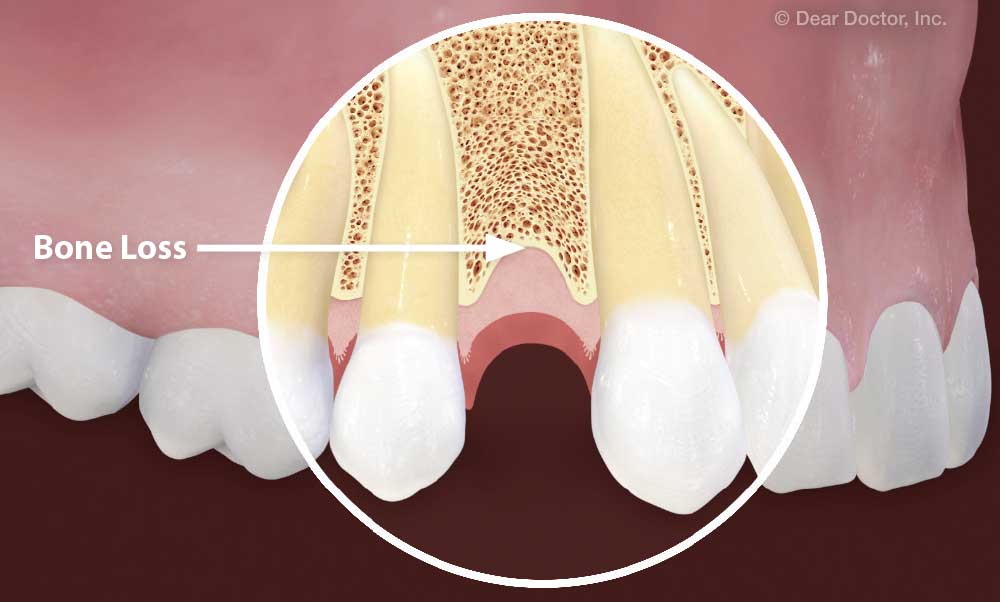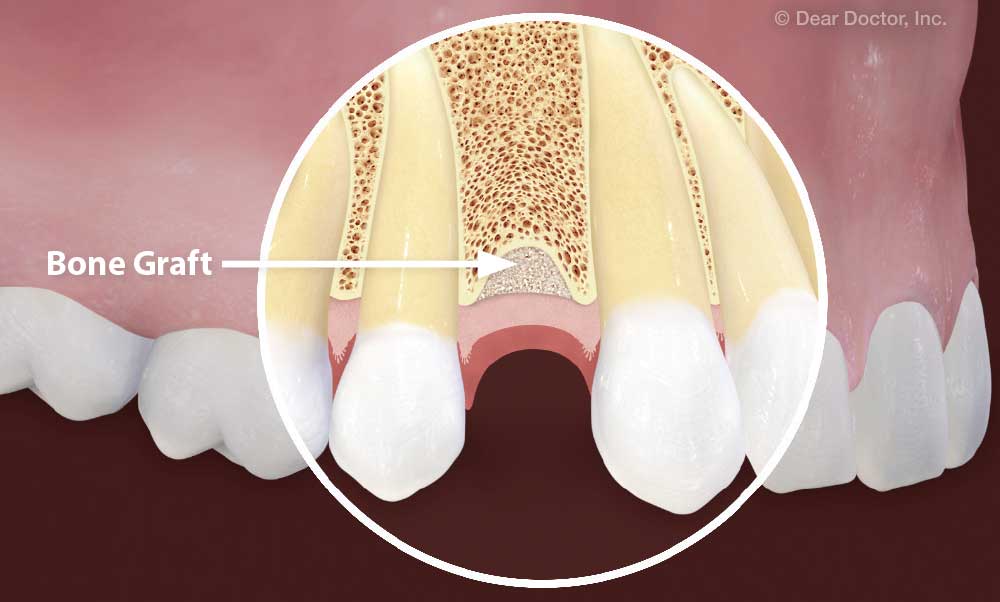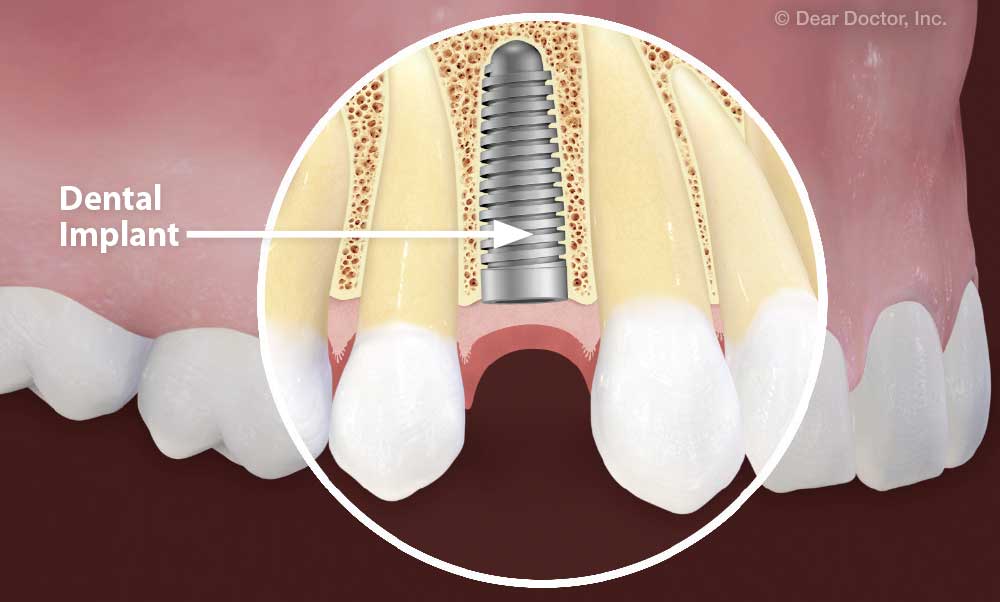Dental Implants After Previous Tooth Loss
Bone Augmentation Makes Implants Possible In Many Situations
Today, dental implants are most people’s preferred method of tooth replacement. In fact, according to the American Dental Association, over 5 million implants are placed each year in the U.S. alone—and that number is growing steadily every year. It’s often possible to have a severely damaged or diseased tooth removed and replaced with a dental implant on the same day. There are a number of advantages to a same-day procedure, including fewer office visits and surgeries, and a minimal amount of bone loss in the jaw.
But what if you lost a tooth years ago, and now want to enjoy the benefits of dental implants—can they still be a viable tooth-replacement option? The answer is generally yes…but the procedure may be different than it would be with a more recent extraction. Let’s take a closer look at how implants work and see what’s involved in the tooth replacement process.
It’s All About Bone
Dental implants generally consist of three parts:
- A base of titanium metal, shaped like a tooth’s root, with screw-like threads. The threads increase the implant’s surface area, so that it can form a stronger attachment to bone in the jaw beneath the gum line.
- A durable, lifelike crown that looks and functions just like a natural tooth, and
- An abutment that joins everything together.
 |
| Lack of bone is often an issue where teeth have been missing for a long time. Around 40% of the bone in the area is lost in the first three years. This can compromise the success of the final restoration. |
The implant system relies on a solid connection with the jawbone to withstand the tremendous biting forces that teeth must withstand every day. But if the quantity or quality of bone is insufficient to provide a solid anchorage for the implant, and the implant can move even a tiny bit, the system will fail. The lack of bone is often an issue where teeth have been missing for a long time. Studies show that after a tooth has been extracted, around 40% of the bone in the area is lost in the first three years. This may create problems for dental implant placement.
Standard dental implants need to be surrounded with at least 1.5-2.0 mm of good-quality bone for stability, and to enable osseointegration (“osseo” – bone; “integration” – fusion) to occur. In this remarkable process, living bone cells actually become fused with the titanium metal of the implant, adding to its solidity. But when the bony, tooth-supporting ridges of the jaw (normally 8-10 mm wide) are reduced in width or height due to bone loss, there may not be enough bone to place an implant. Fortunately, state-of-the-art dentistry offers several ways to solve this problem.
Building Bone Tissue to Add Support
One solution to the problem of insufficient bone is augmentation, or bone grafting—that is, building up bone cells in areas where they are needed. At one time, bone grafting often involved harvesting tissue from one area of the mouth and moving it to another; this meant two surgical sites were needed for one completed graft. Today it’s much simpler: A dentist can obtain safe, processed bone material from a laboratory and place it directly into your jaw in a minor surgical procedure. The processed material acts as a scaffold on which the body begins to regenerate its own living bone tissue. Usually, in four to seven months, enough natural bone has formed to enable an implant to be successfully placed.
 |
| A deficiency in bone volume can be improved by placing processed bone material from a laboratory directly into the deficient area. This material acts as a scaffold on which the body regenerates its own living bone tissue. |
Today, dentists perform bone augmentation regularly, adding up to 4 or 5mm in width and 3mm in height to the alveolar (tooth-supporting) ridge beneath the gums. An experienced practitioner will not only take care to use high-quality materials, but will also have the skill needed to manipulate the soft tissue (gums) adeptly, ensuring that it properly covers the grafting material and looks natural. In fact, many will routinely place grafting material into the tooth socket at the time of extraction, whether or not an implant is planned. This can help retain bone for up to 10 years, giving their patients time to make a decision about getting implants.
More Complex Situations
With routine bone augmentation, it is often possible to successfully place a dental implant several years after a tooth has been lost. But each person’s situation is unique, and certain individuals may need more extensive treatment. In some instances—for example, if the tooth has been missing for many years, or if the person is a smoker, has gum disease, or poor oral hygiene—several separate procedures may be needed to obtain the best result.
Computer-aided imaging systems such as cone beam CT, helpful in routine implant procedures, are indispensable when there are questions about quality and quantity of bone. A cone beam CT scan is a non-invasive digital imaging method that allows dentists to see the exact height, width and shape of bone tissue in the jaw. Having a picture of the existing bone is essential for treatment planning; it makes bone augmentation and implant placement more predictable, and helps avoid many potential problems.
 |
| Once the bone loss is corrected, an implant can be placed in the optimal position to obtain the best functional and aesthetic result. |
If serious periodontal (gum) disease or recession is discovered, the first step may be to restore the soft tissues via gum grafting or other periodontal procedures. Following this treatment, bone augmentation may be performed. In some cases, a connective tissue graft may also be recommended, to give the gums a better aesthetic appearance. Finally, the implant procedure can be performed. When more complex issues become apparent, the skill and clinical experience of your dentist will play a large role in guiding the treatment process. In some instances, your dentist may refer you to another specialist for some or all of your treatment.
Treatment Alternatives
Dental implants have a remarkably high success rate, whether they are placed immediately after tooth extraction or years later. One reason why over 90% succeed is that specific protocols exist for implant placement. Experience has shown that if there is enough natural bone available to cover 70% of the titanium base of the implant, then implant placement and bone augmentation can be done during the same office visit; the body is capable of regrowing the remaining bone tissue. Otherwise, the process may involve visits spaced months apart.
An individual’s treatment plan may also depend on exactly what that person’s expectations are. For example, a young person missing just one tooth may be looking for a restoration that appears perfectly natural, with a gum line that looks even all around the smile. An older person who lost teeth years ago may be primarily concerned with functionality—that is, the ability to bite, chew and speak properly—and less worried about aesthetics. This may be especially true if it’s a back tooth that isn’t visible in the smile. In situations where aesthetics takes a back seat to functionality, not every step in the process may be required; for example, soft-tissue and connective-tissue grafting are not always needed in areas that are less visible.
In some cases, it’s also possible to use an alternative to regular dental implants, such as mini-implants or “platform-switched” implants. As their name implies, mini implants are smaller in size than standard implants. They are often used to stabilize implant-supported dentures, or as temporary anchorage devices for orthodontic treatment; however, they may sometimes be recommended for permanent tooth replacement. A “platform-switched” implant uses a smaller-diameter abutment on a standard-size implant body. Several studies indicate that these systems offer advantages in terms of bone tissue maintenance, which could make them appropriate in situations where bone loss is a problem and aesthetics is not a primary concern. Your dentist may recommend these types of implants in certain situations.
Options for Long-Missing Teeth
With the technology available today, it’s possible for more individuals than ever before to enjoy the benefits of dental implants—even if they have been missing teeth for several years. Just a few years ago, the best solution for long-missing teeth might have been a natural-tooth bridge (or, as a last resort, partial dentures). However, dental implants offer several advantages over bridges.
To place a bridge, healthy teeth on either side of the gap must be prepared: This involves removing enamel and dentin from the tooth’s outer surfaces, which can potentially make teeth weaker and more susceptible to decay. Implants require no work on adjacent healthy teeth. Also, bridges don’t stop bone loss from occurring where teeth are missing; in time, space may open up between the gums and the bridge, causing problems for aesthetics and oral health. Implants, however, can help stop further bone loss; they allow the jawbone to be stimulated via pressure on the artificial tooth, just as natural teeth do.
The widespread success of dental implants has led to revolutionary changes in the way missing teeth are replaced. If you are considering tooth replacement, ask your dentist whether implants could be right for you.




